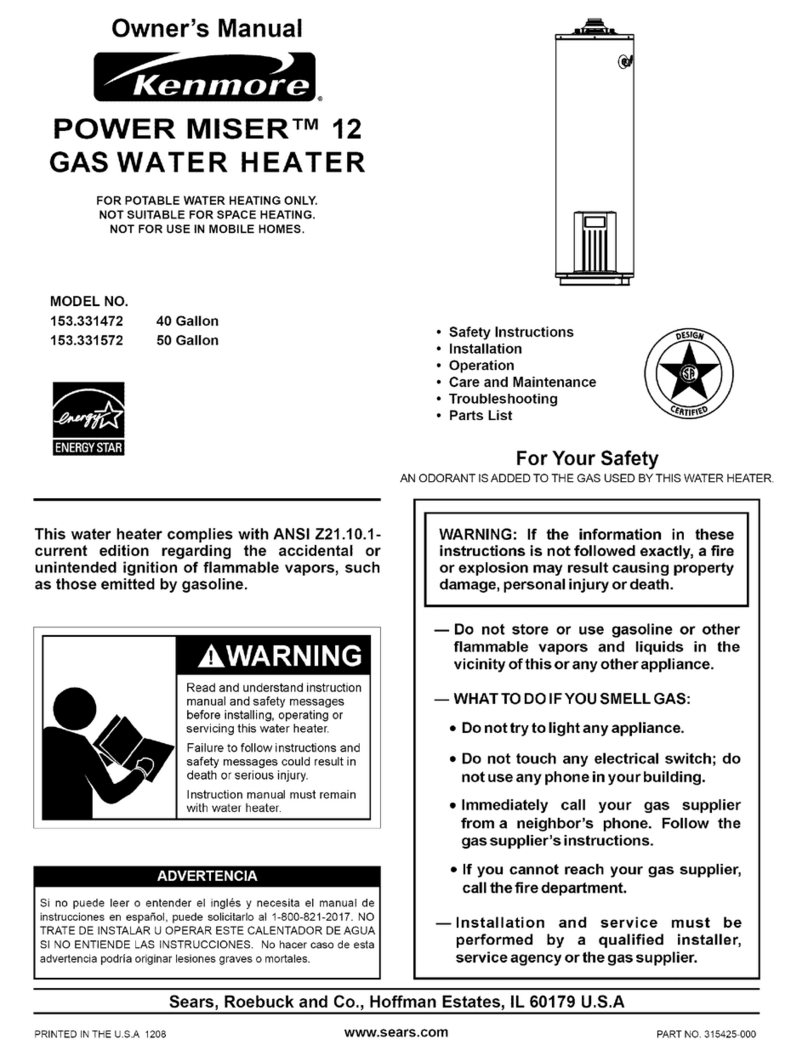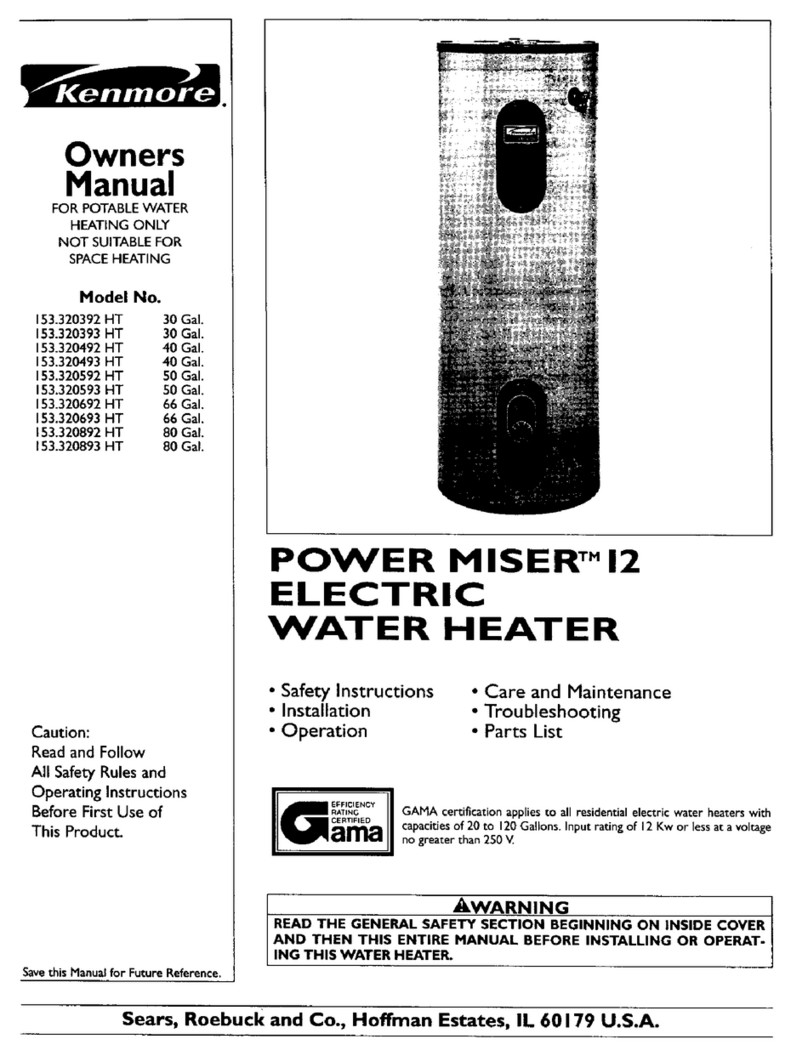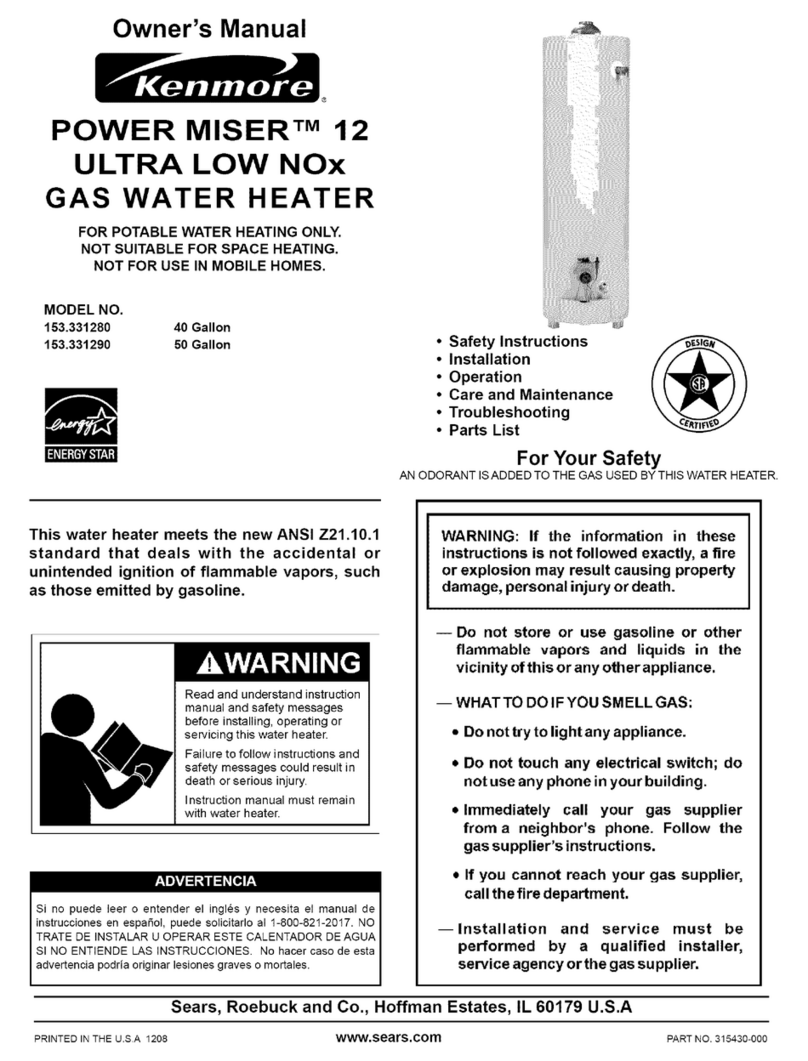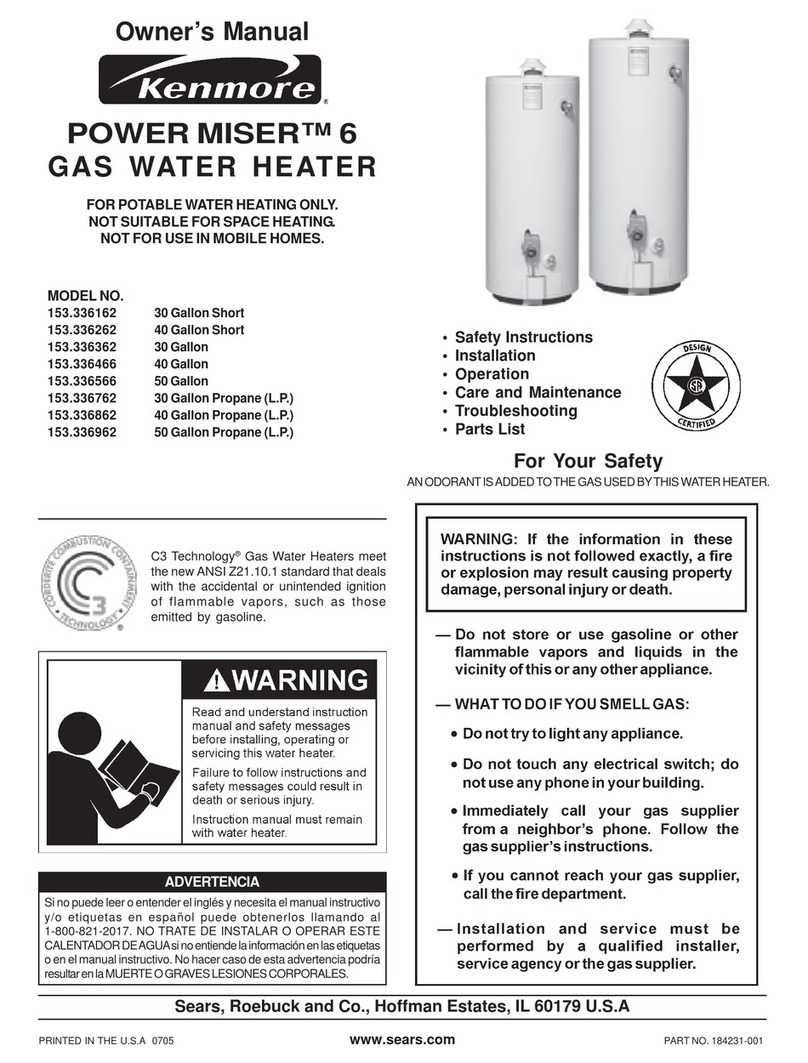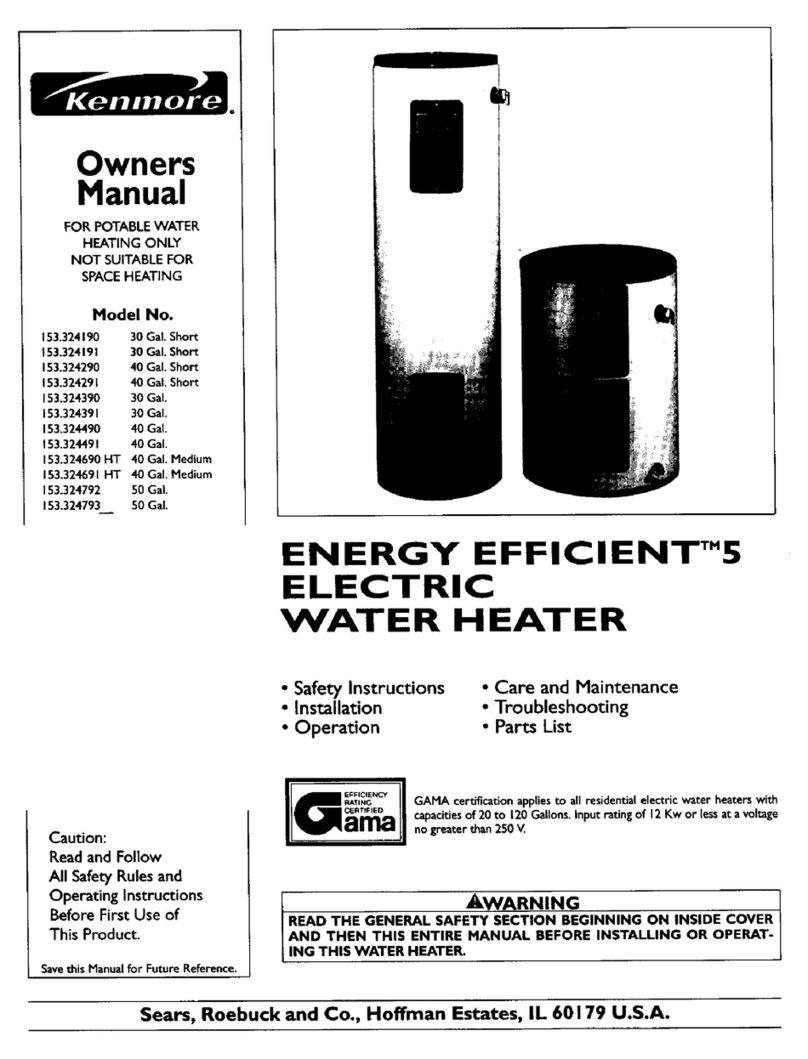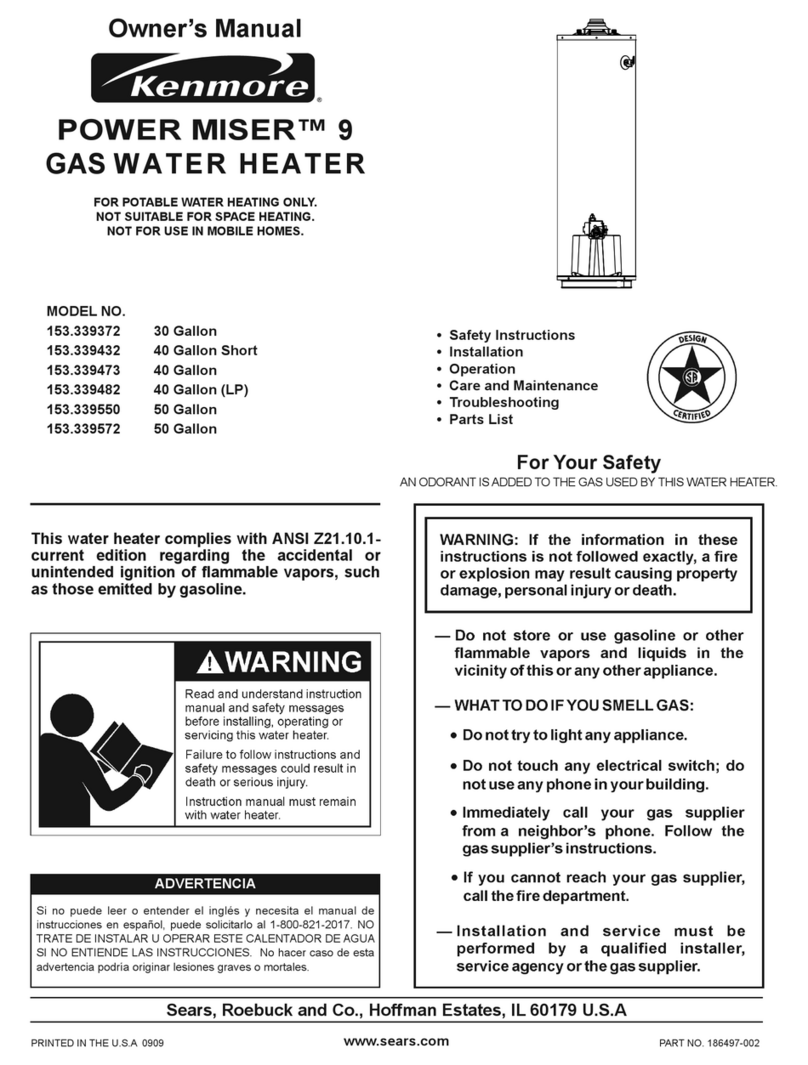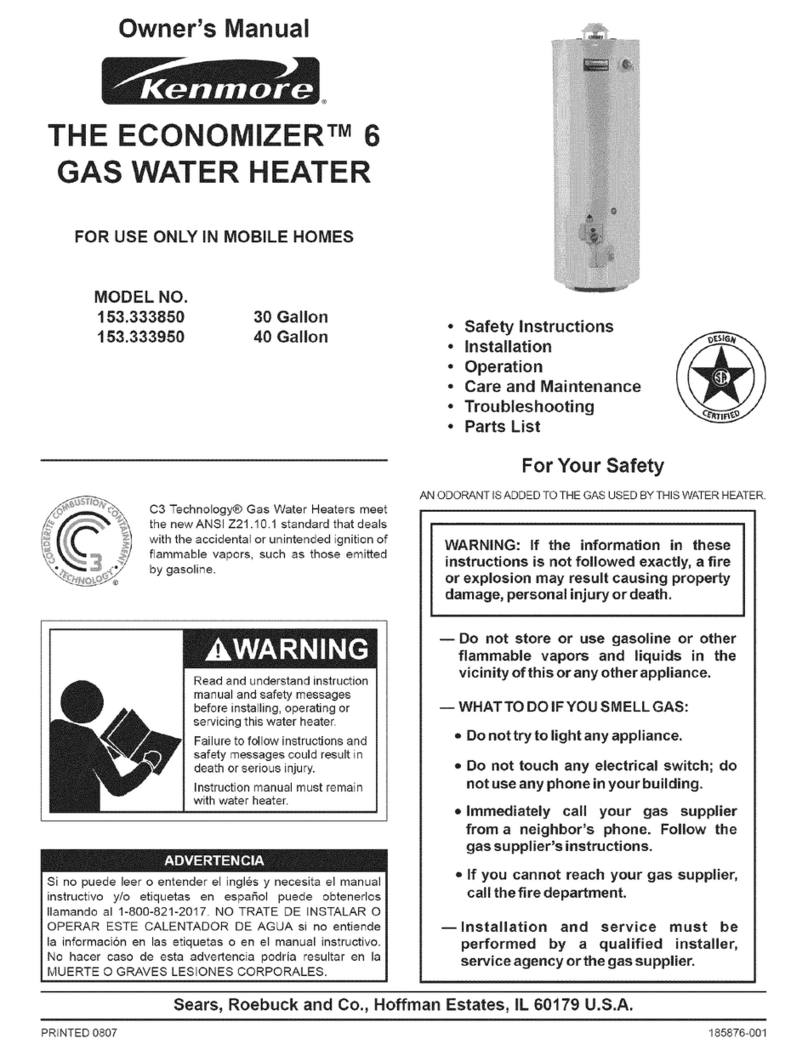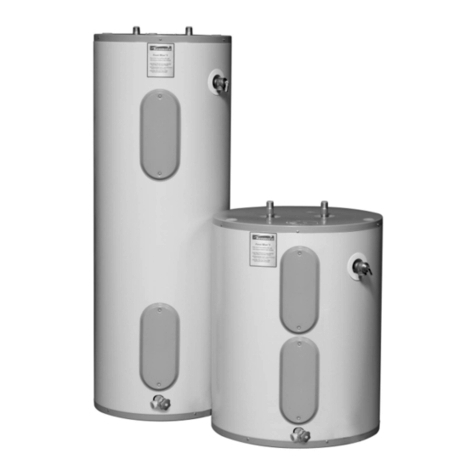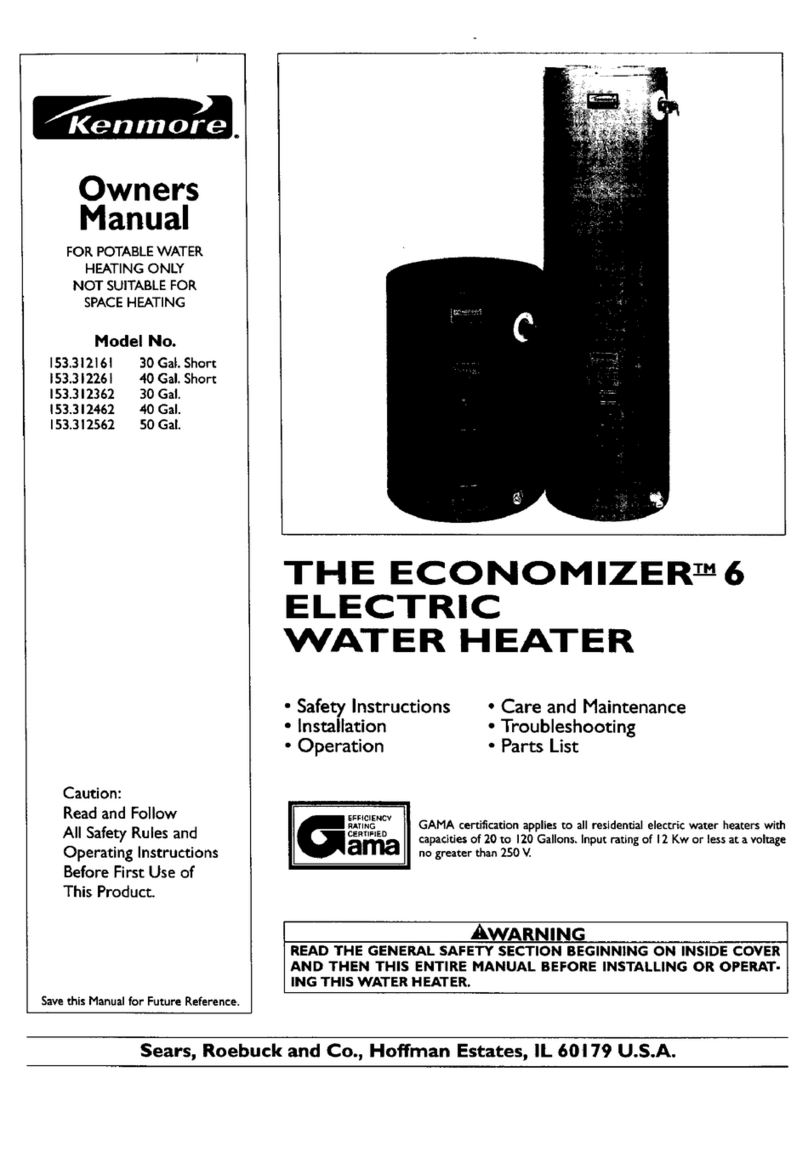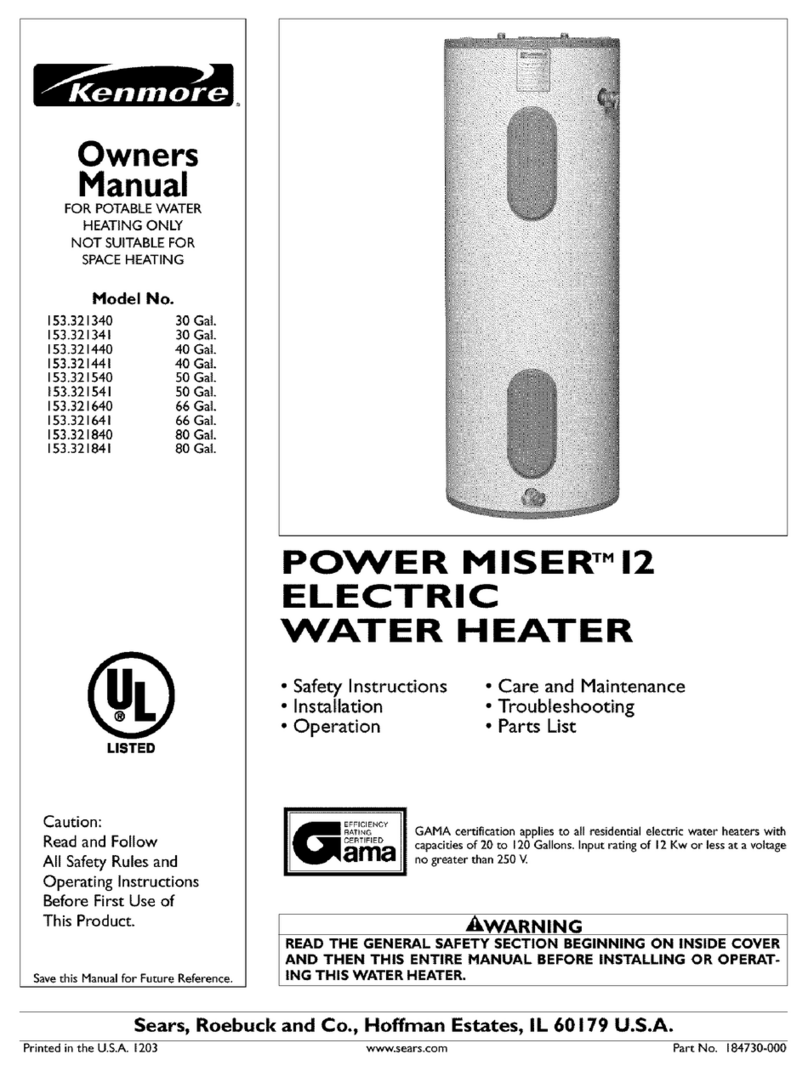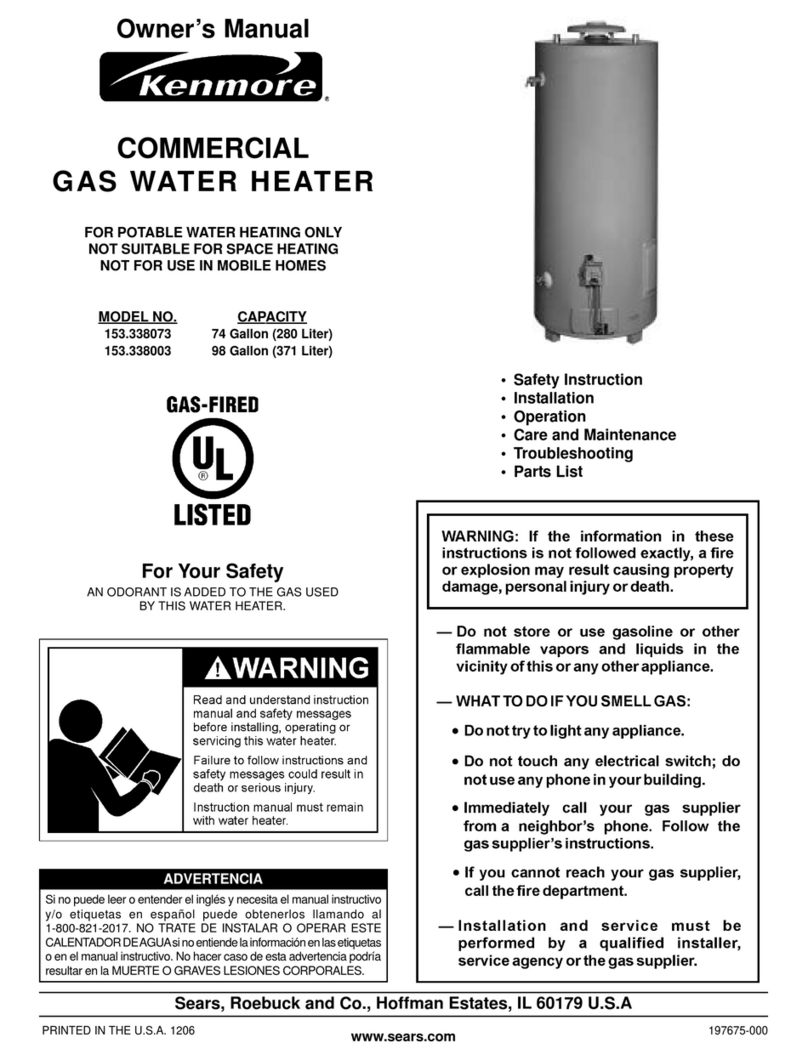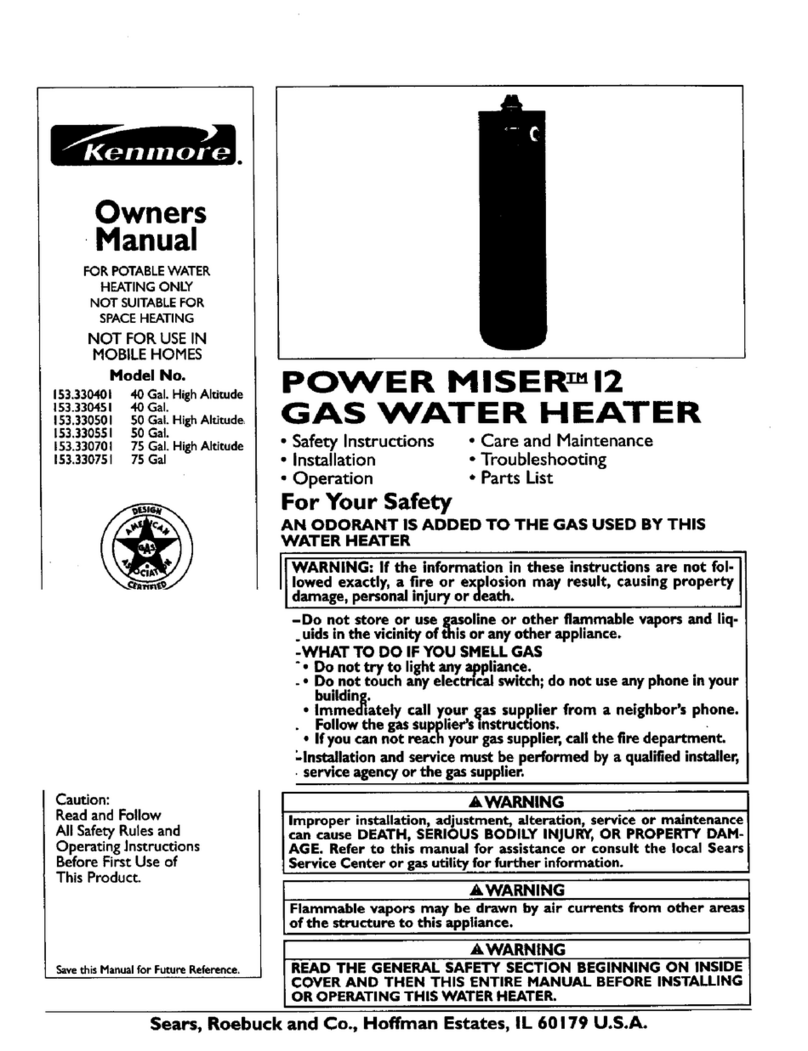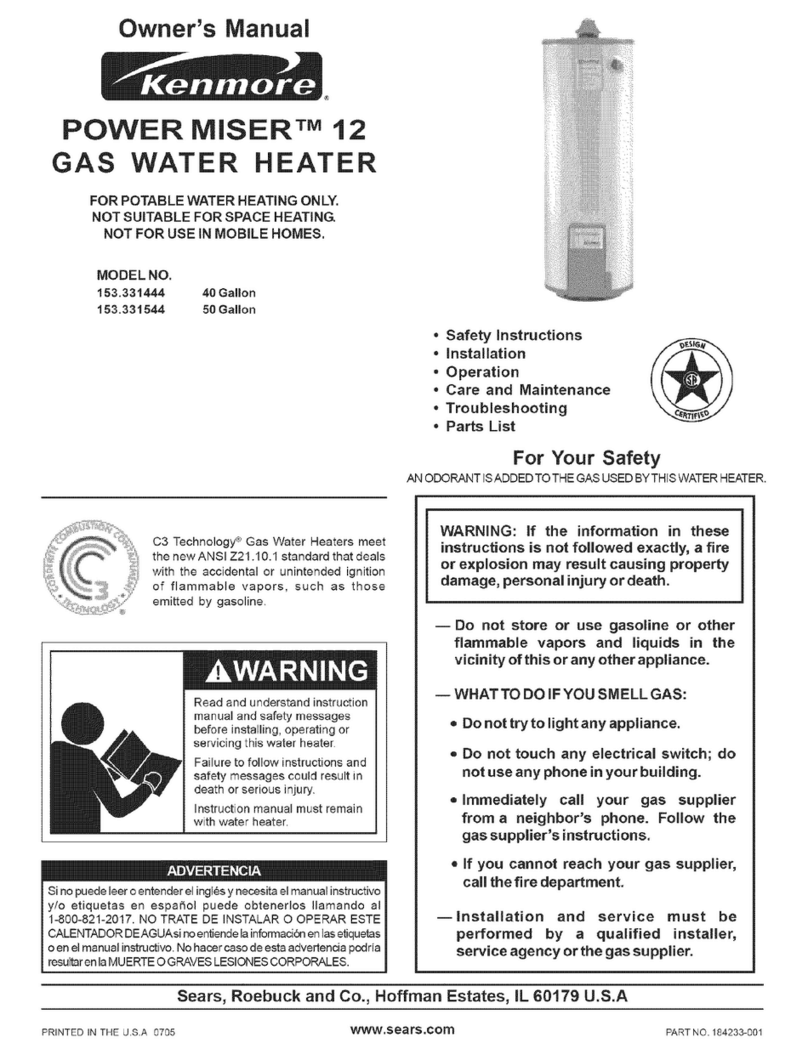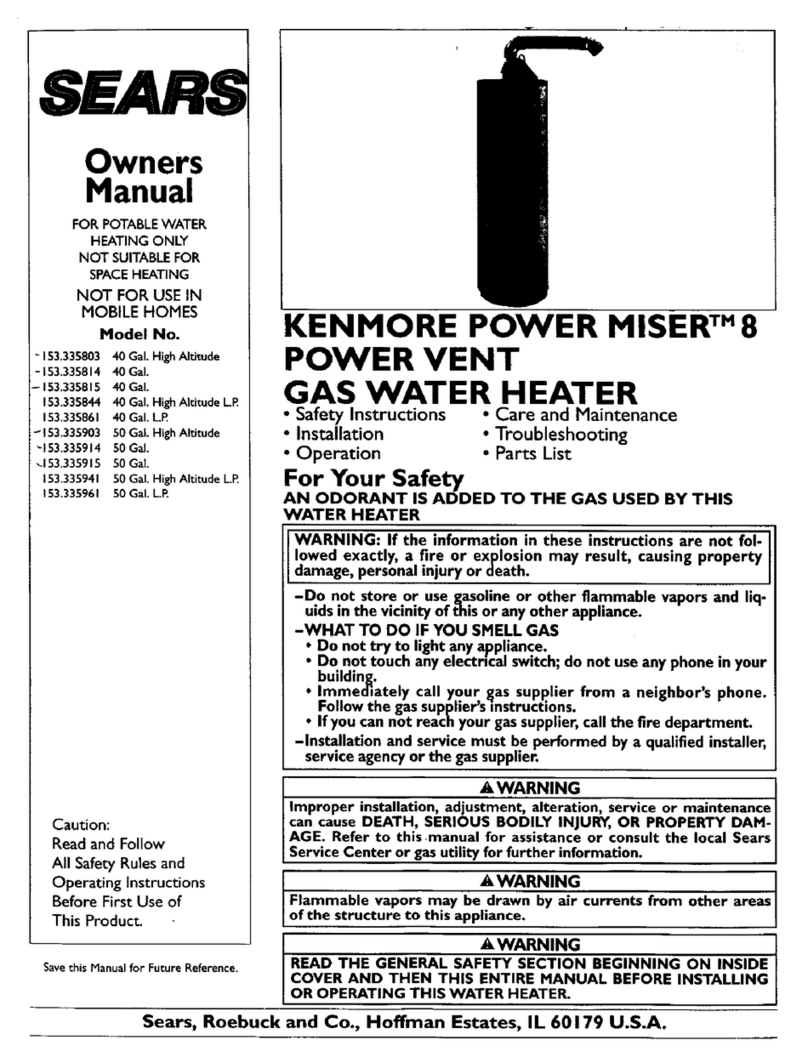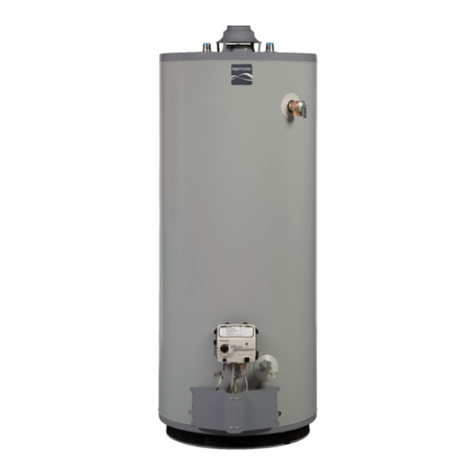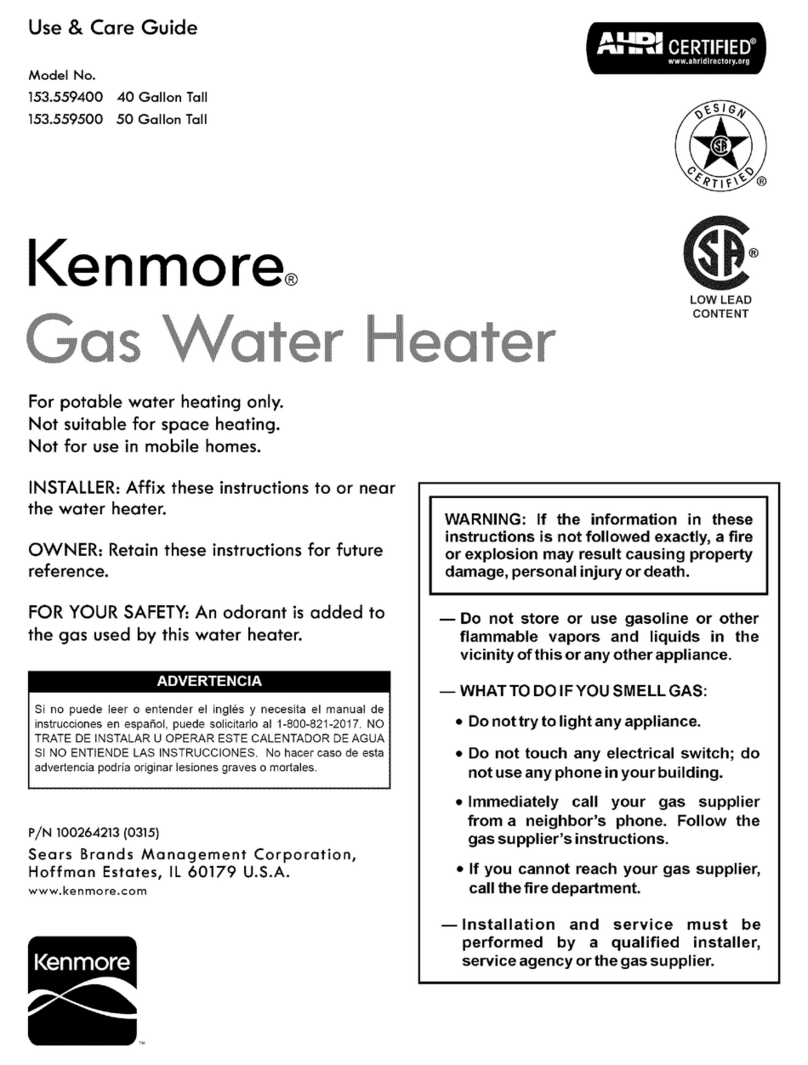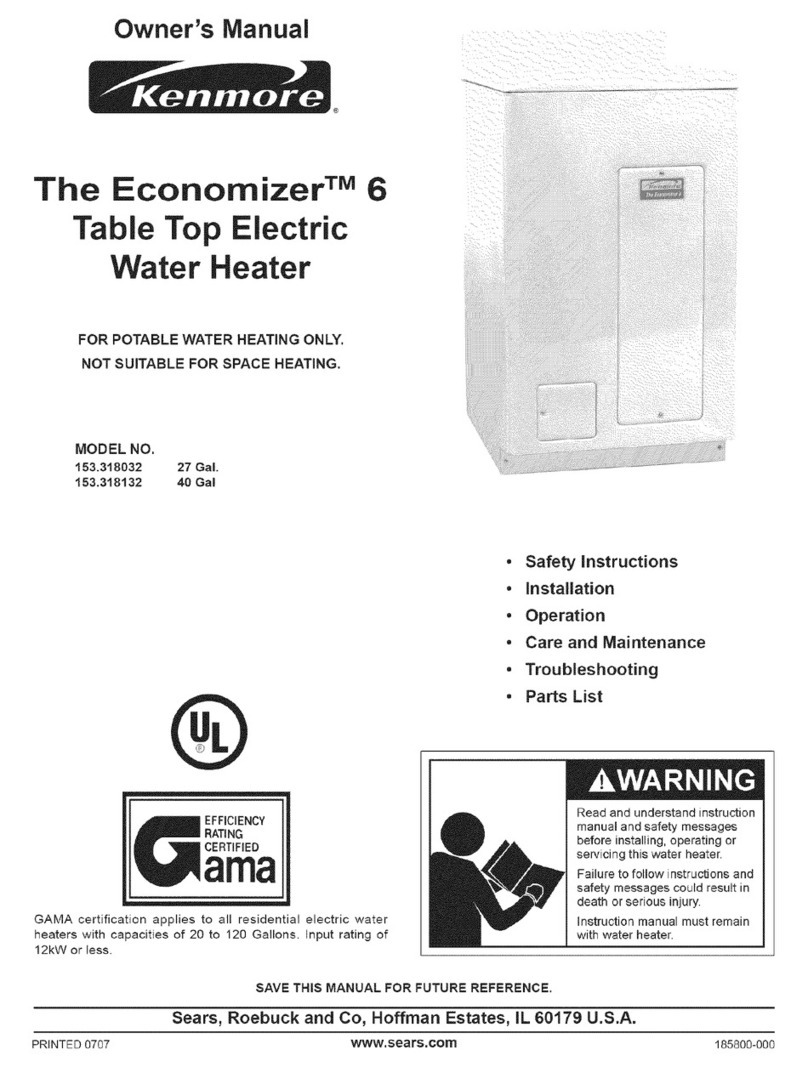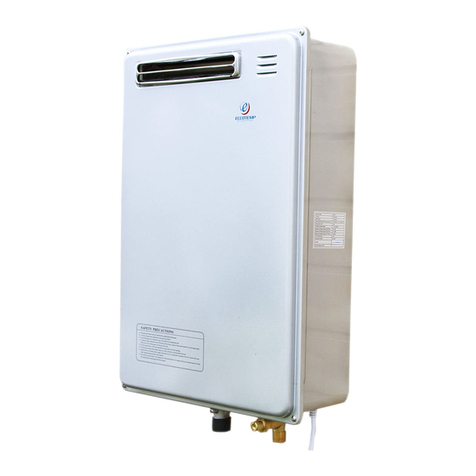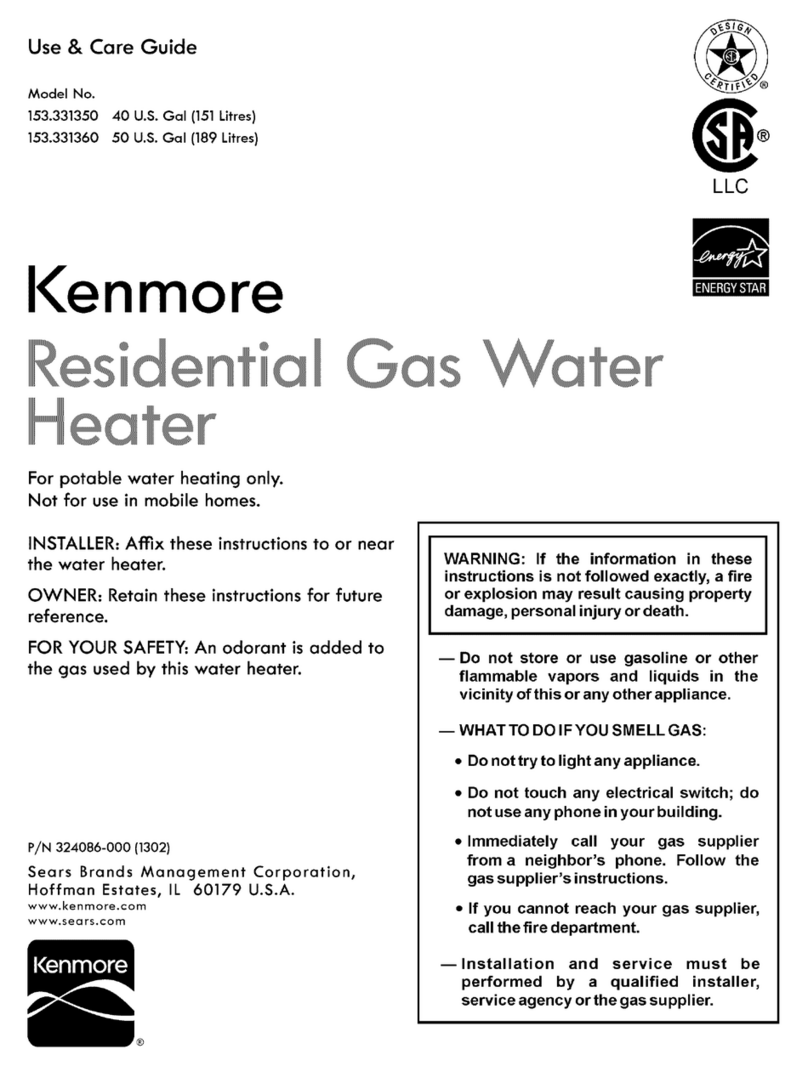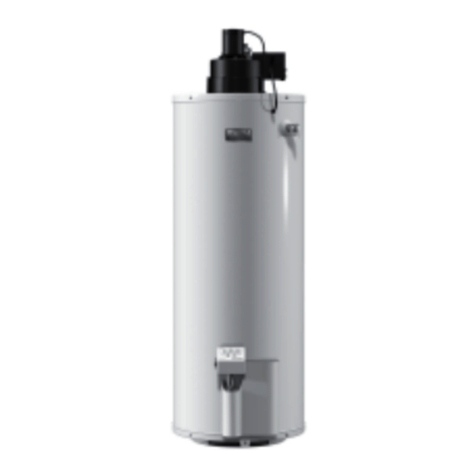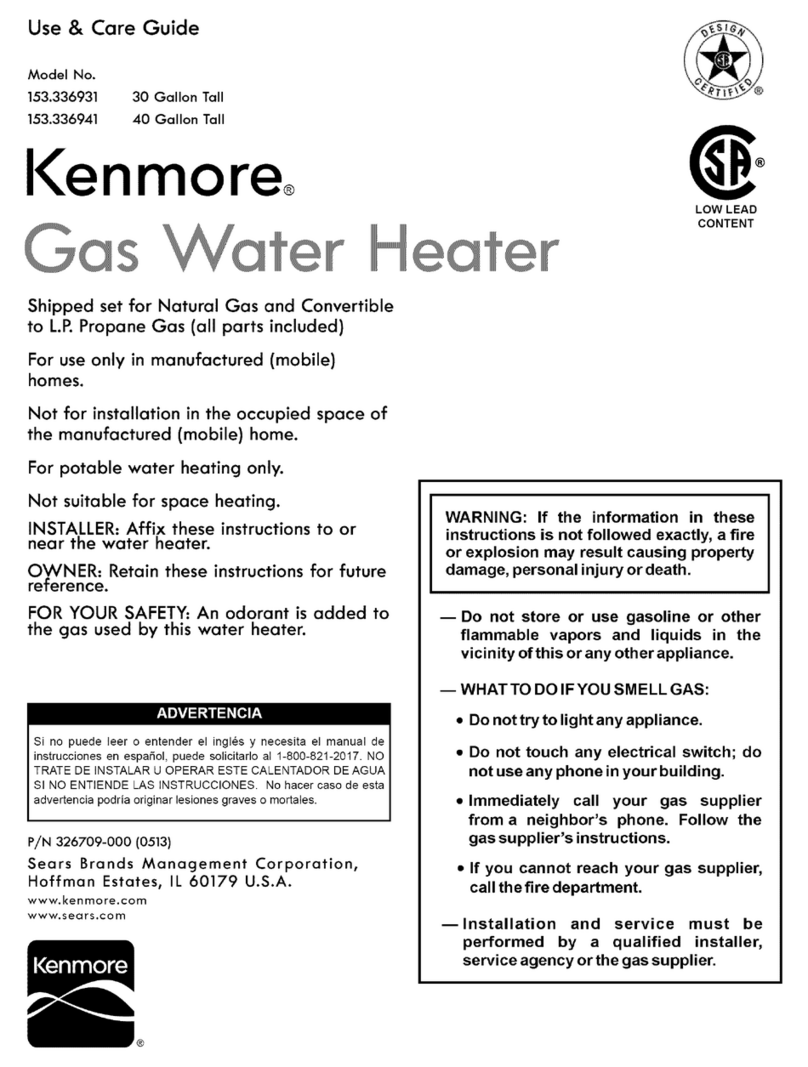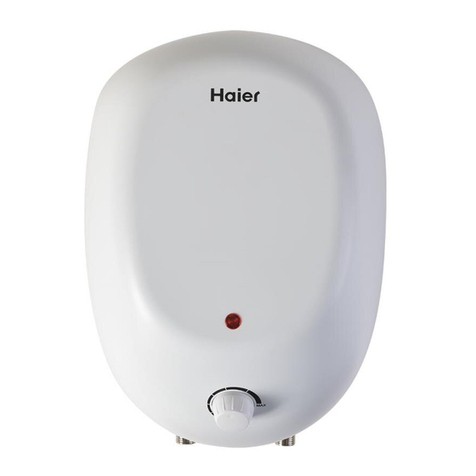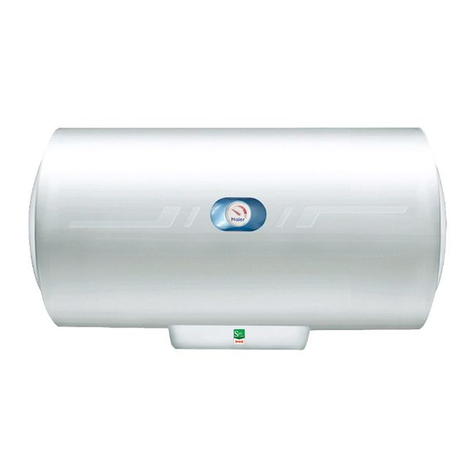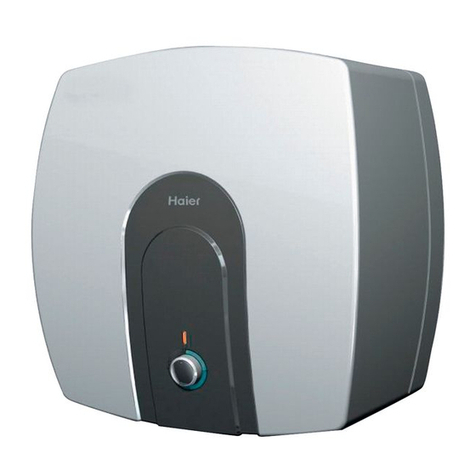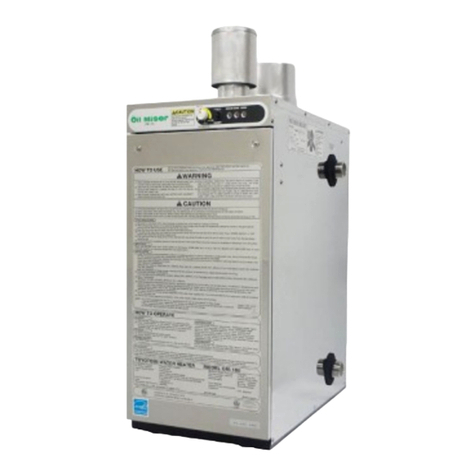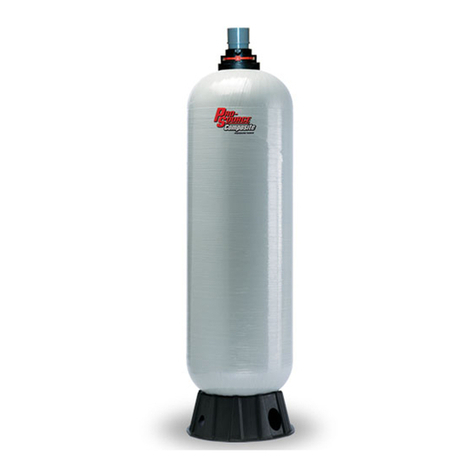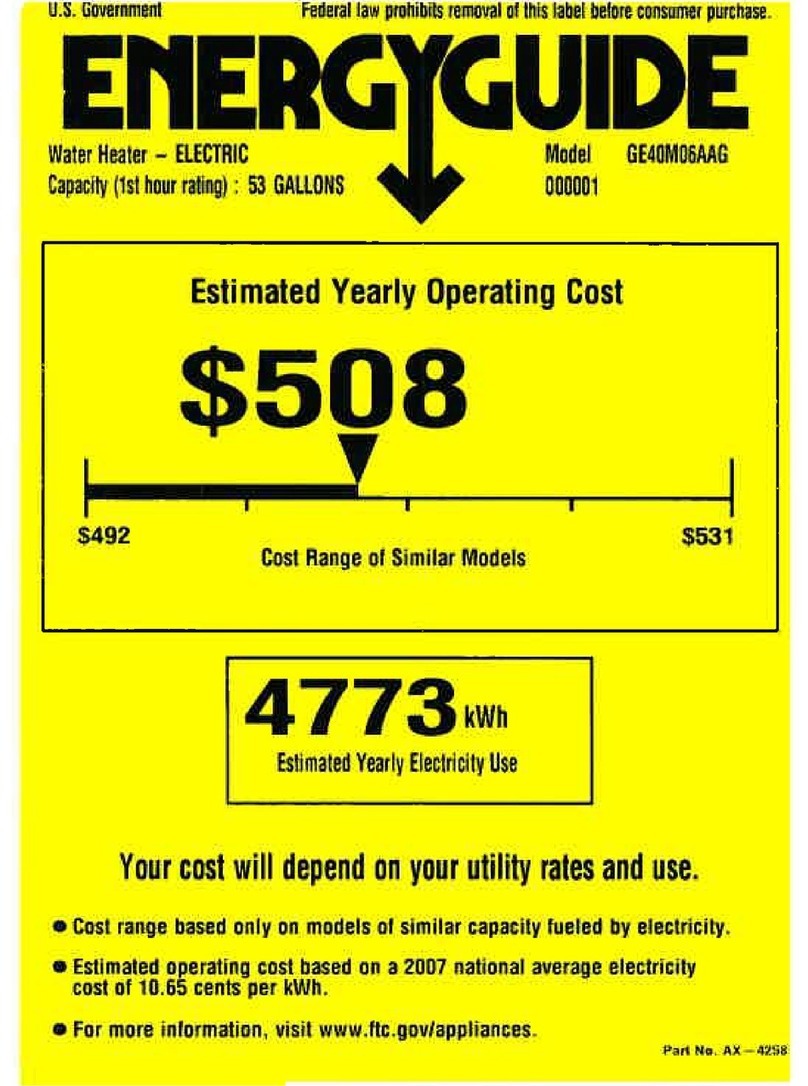
5
TABLE OF CONTENTS
SAFE INSTALLATION, USE AND SERVICE 2
GENERAL SAFETY 3
PRODUCT WARRANTY 6
INTRODUCTION 8
Get To Know Your Water Heater - Gas Models. . . . . 9
INSTALLATION CONSIDERATIONS 10
Rough In Dimensions . . . . . . . . . . . . . . . . . . . . . . . 10
Water Piping - Mixing Valve Usage. . . . . . . . . . . . . 12
Facts To Consider About Location. . . . . . . . . . . . . . 13
Handle Installation. . . . . . . . . . . . . . . . . . . . . . . . . . 14
Earthquake Zones. . . . . . . . . . . . . . . . . . . . . . . . . . 15
Combustion Air And Ventilation. . . . . . . . . . . . . . . . 17
Appliances In Unconfined Spaces . . . . . . . . . . . . . 17
Appliances In Confined Spaces . . . . . . . . . . . . . . . 17
Chemical Vapor Corrosion . . . . . . . . . . . . . . . . . . . 19
Water Piping . . . . . . . . . . . . . . . . . . . . . . . . . . . . . . 19
Closed Water Systems . . . . . . . . . . . . . . . . . . . . . . 19
Thermal Expansion. . . . . . . . . . . . . . . . . . . . . . . . . 19
Hard Water . . . . . . . . . . . . . . . . . . . . . . . . . . . . . . . 20
Temperature-pressure Relief Valve. . . . . . . . . . . . . 20
Gas Piping. . . . . . . . . . . . . . . . . . . . . . . . . . . . . . . . 22
Sediment Traps. . . . . . . . . . . . . . . . . . . . . . . . . . . . 22
Gas Line Purging . . . . . . . . . . . . . . . . . . . . . . . . . . 23
High Altitude Installations . . . . . . . . . . . . . . . . . . . . 23
Flooding/freezing. . . . . . . . . . . . . . . . . . . . . . . . . . . 23
Filling The Water Heater . . . . . . . . . . . . . . . . . . . . . 23
Venting . . . . . . . . . . . . . . . . . . . . . . . . . . . . . . . . . . 24
Vent Pipe Techniques . . . . . . . . . . . . . . . . . . . . . . . 24
Planning The Vent System . . . . . . . . . . . . . . . . . . . 25
Installation Of Vent System. . . . . . . . . . . . . . . . . . . 26
Vent Terminal Installation, Sidewall. . . . . . . . . . . . . 26
Installation Of Vent System, Sidewall . . . . . . . . . . . 27
Installation Of Vertical Vent System . . . . . . . . . . . . 28
Vent Pipe Preparation . . . . . . . . . . . . . . . . . . . . . . . 28
Connection To Vent Pipe. . . . . . . . . . . . . . . . . . . . . 31
Condensate. . . . . . . . . . . . . . . . . . . . . . . . . . . . . . . 31
US. Power Vent. . . . . . . . . . . . . . . . . . . . . . . . . . . . 32
Electrical Connections. . . . . . . . . . . . . . . . . . . . . . . 33
Calibration. . . . . . . . . . . . . . . . . . . . . . . . . . . . . . . . 33
OPERATING INSTRUCTIONS 34
Display Panel . . . . . . . . . . . . . . . . . . . . . . . . . . . . . 34
Wiring Diagram . . . . . . . . . . . . . . . . . . . . . . . . . . . . 36
Lighting Instructions . . . . . . . . . . . . . . . . . . . . . . . . 37
Temperature Regulation . . . . . . . . . . . . . . . . . . . . . 38
Unique Hybrid Features . . . . . . . . . . . . . . . . . . . . . 39
Temperature Regulation . . . . . . . . . . . . . . . . . . . . . 41
Constant Output Temperature Control . . . . . . . . . . 42
Start Up Conditions. . . . . . . . . . . . . . . . . . . . . . . . . 42
Operational Conditions . . . . . . . . . . . . . . . . . . . . . . 42
MAINTENANCE 43
Housekeeping. . . . . . . . . . . . . . . . . . . . . . . . . . . . . 43
Venting System Inspection . . . . . . . . . . . . . . . . . . . 43
Flood Damage. . . . . . . . . . . . . . . . . . . . . . . . . . . . . 43
Anode Rod Inspection. . . . . . . . . . . . . . . . . . . . . . . 43
Anode Rod Replacement . . . . . . . . . . . . . . . . . . . . 44
Temperature-pressure Relief Valve Operation . . . . 44
Motors. . . . . . . . . . . . . . . . . . . . . . . . . . . . . . . . . . . 44
Snow Accumulation. . . . . . . . . . . . . . . . . . . . . . . . . 45
Cleaning The Inlet Water Filter . . . . . . . . . . . . . . . . 45
Cleaning The Heat Engine . . . . . . . . . . . . . . . . . . . 45
Flushing The Heat Exchanger (Lime Build-up) . . . . 45
Draining The Tank. . . . . . . . . . . . . . . . . . . . . . . . . . 46
Fault Indication And Error Codes . . . . . . . . . . . . . . 46
Diagnostic Display. . . . . . . . . . . . . . . . . . . . . . . . . . 47
TROUBLESHOOTING 52
Service . . . . . . . . . . . . . . . . . . . . . . . . . . . . . . . . . . 54
Leakage Checkpoints . . . . . . . . . . . . . . . . . . . . . . . 54
Replacement Parts . . . . . . . . . . . . . . . . . . . . . . . . . 55
Parts Identification. . . . . . . . . . . . . . . . . . . . . . . . . . 57
Notes. . . . . . . . . . . . . . . . . . . . . . . . . . . . . . . . . . . . 58
Fill out and keep with water heater.
IMPORTANT INFORMATION
Model Number _________________________________________
Serial Number__________________________________________
Installation Information:
Date Installed __________________________________________
Company’s Name_______________________________________
Street or P.O. Box_______________________________________
City, State, and Zip Code _________________________________
Phone Number ____________ Plumber’s Name_______________
